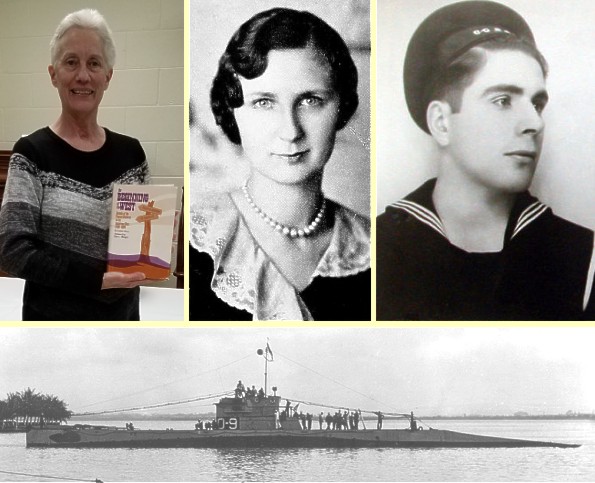Kansas Snapshots by Gloria Freeland - January 31, 2020
It's the Barrys
Rabbits are known for having a collection of tunnels with various entrances to allow them to escape from danger. Several can enter
from different locations and meet up underground. Husband Art and I had a similar experience recently, but unlike the rabbits, we
had no idea we were taking such an adventure.
The story began last year - or so I thought. I had agreed to write local history articles for the Riley County Historical Society
for publication in the local newspaper. The chosen subject for the Sept. 29, 2019 paper was Josephine Louise Barry.
Barry, who went by Louise, graduated in 1931 with a degree in library science from what is now Kansas State University. Her love of
books appeared at an early age as she began working at the local library mending them when she was still in grade school. After
earning her bachelor's degree, she accepted a full-time position with the local library, but took a year off in 1933-'34 to obtain
further schooling in Illinois.
In the spring of 1936, she accepted a position in the Kansas State Historical Society in Topeka. While she worked there many years,
she left her position during World War II to serve as an ensign in the Navy's ordnance bureau in Washington, D.C.
After the war, she returned to her position in Topeka and would gain a small measure of fame in Kansas history. Her position gave
her access to a huge number of resources and ultimately lead to the 1972 publication of her book, "The Beginning of the West: Annals
of the Kansas Gateway to the American West, 1540-1854." The massive book contains 1,232 pages and the index alone covers 60 pages.
Her book is considered the principal reference for what happened in pre-territorial Kansas. I located one scholarly work alone that
cited her book as a reference more than 100 times.
But around the time of the book's publication, Barry developed tuberculosis. So as not to infect others, she worked at the library
at night. But just two years after what might be considered the culminating moment of her career, she succumbed to the disease.
She is buried in Manhattan�s Sunset Cemetery.
While putting the wraps on last September's article, which included several detailed references to Barry's work, I asked Art if he
would locate a photo of her in the 1931 college yearbook to accompany the article, which he did.
While I presumed that would be the end of it, Art, who hadn't read the article when it was originally published, recently perused it
and something immediately jumped out at him. In my article, I had mentioned Barry was born in Keats, a small several-square-block
village just southeast of where we live. A project he has been working on for years included Marvin Dale Barry, and he remembered
Marvin's family had lived in Wildcat Township, the same one in which Keats is located. What was the likelihood that the two were not
connected?
Considering how far we are from the oceans, it also seemed rather coincidental that Marvin had joined the Navy as Louise later did.
Marvin trained as a seaman on the O-9 submarine. It had experienced on-going mechanical problems. Wikipedia described its fate as
follows:
On the morning of 20 June 1941, O-9 and two of her sisters, O-6 and O-10, left as a group from the submarine base in New London,
[Connecticut] for the submarine test depth diving area east of the Isles of Shoals. Upon reaching their designated training
area, some 15 mi (24 km) off Portsmouth, New Hampshire, O-6 made the first dive, followed by O-10. Finally, at 08:37, O-9 began her
dive. At 10:32, O-9 had not returned to the surface.
While the incident occurred before the war, the submarines had been re-commissioned in anticipation of the U.S.'s entry into it.
Because of the depth where the O-9 was lost, the wreckage was not located until 1997. The hull had been crushed.
Art's ongoing several-years-long project has been documenting the men from Riley County, Kansas who died during World War II. During
his work, he had determined that Marvin Barry's parents were Charles A. and Blossom (Millholland) Barry. His Barry grandparents were
Simon and Alice.
After reading my article, Art did some additional research and discovered Simon and Alice's first child had been born 16 years before
Charles. He was Merven Melchior Barry - the father of Louise. Marvin and Louise had been first cousins.
So, Art and I had entered two different rabbit holes and ended up bumping heads somewhere in the tunnels.
A once-popular expression was "It's the berries" and was used in the same way we might today say, "That was fun." I guess an
adaptation here might be, "It's the Barrys!" ... and it WAS fun.
